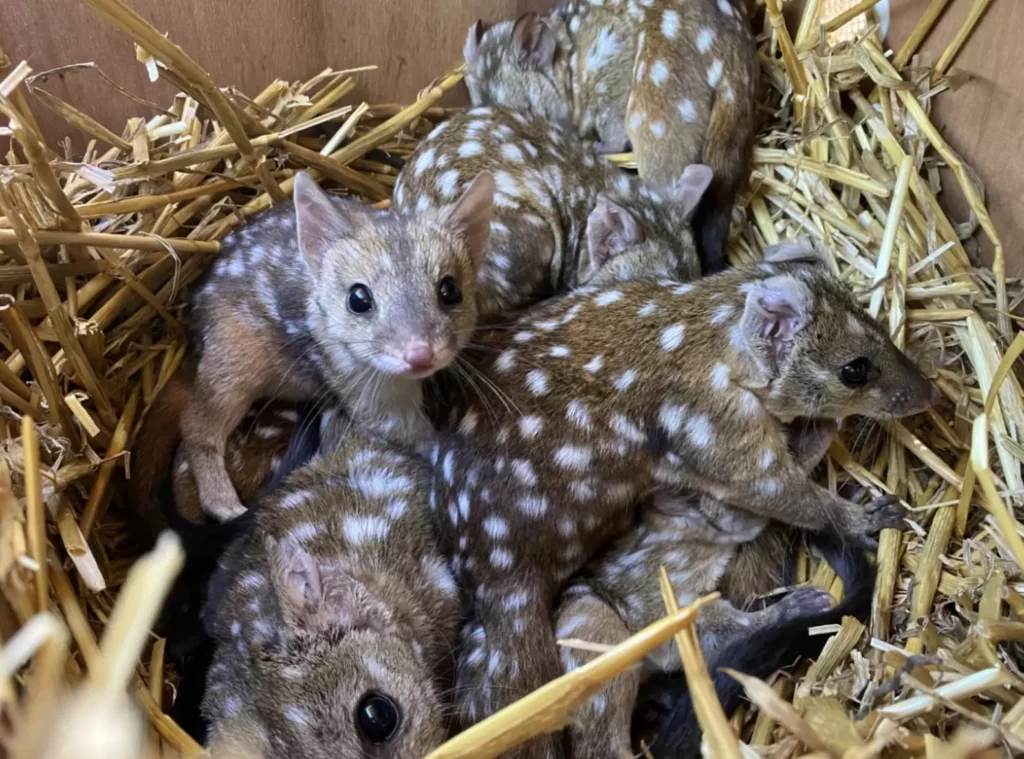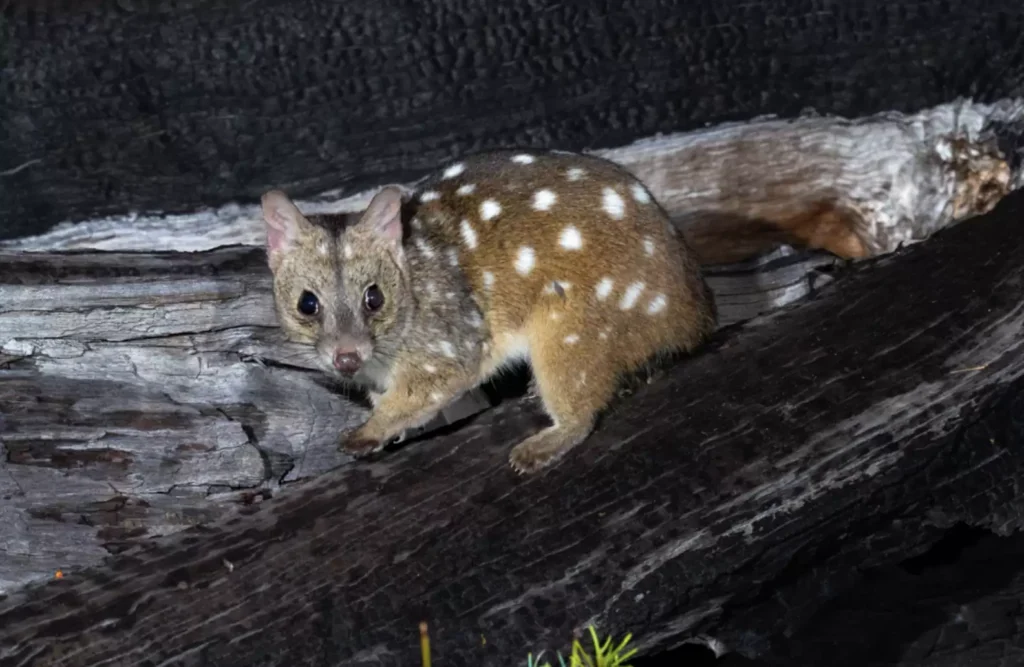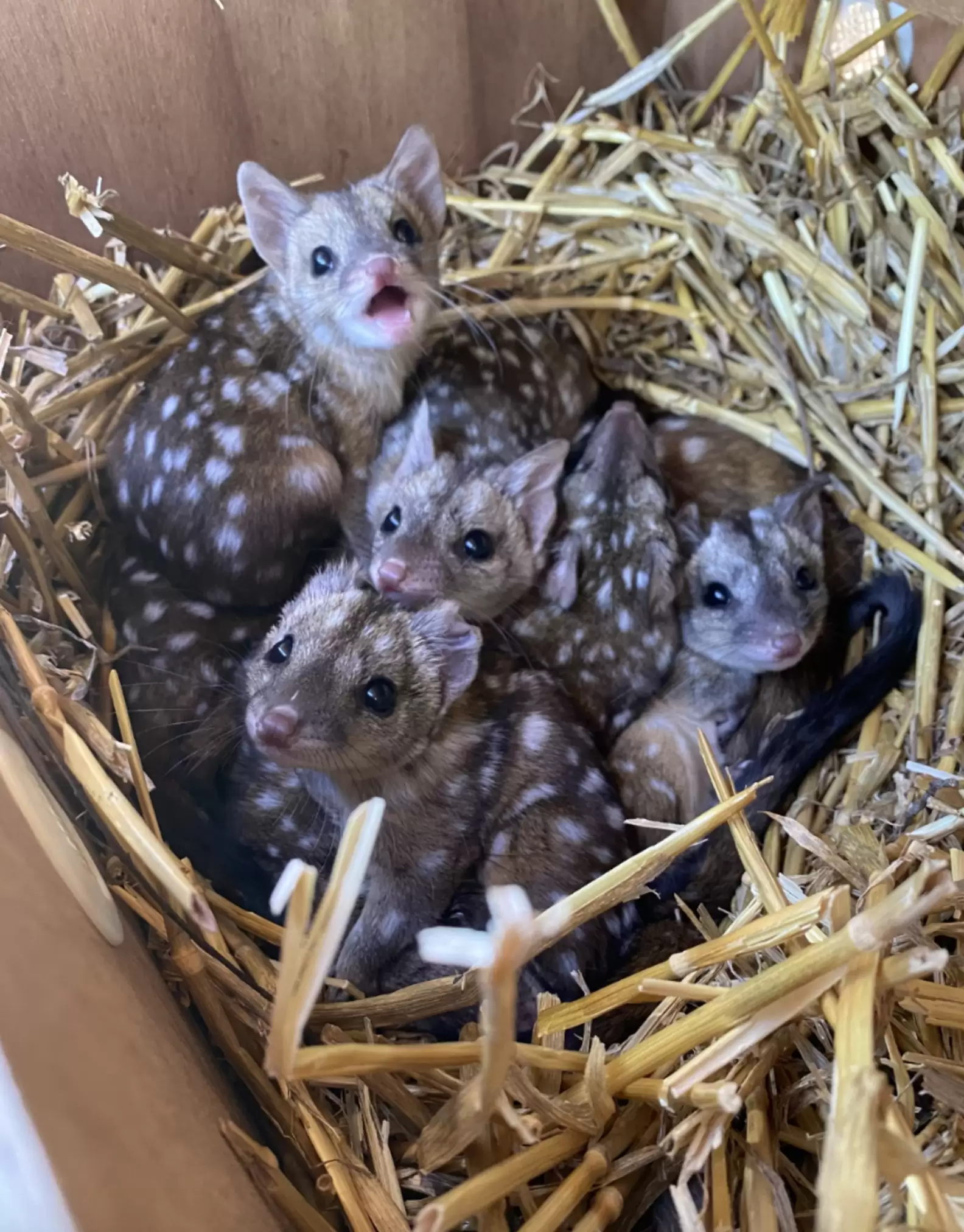In a remarkable turn of events at the Mt Gibson Wildlife Sanctuary in Australia, ecologists conducting a routine survey stumbled upon a breathtaking sight. Female western quolls were observed with tiny, wriggling beings in their pouches – a groundbreaking moment as the sanctuary welcomed its first baby western quolls. The ecologists, understandably, were elated by this unexpected and joyous discovery.
Western quolls, marsupial mammals akin in size to domestic cats, hold a vital role in balancing populations of small invertebrates, reptiles, and birds. The Australian Wildlife Conservancy (AWC) highlights that these endearing creatures were once widespread across a significant stretch of the Australian mainland. However, their numbers have dwindled over time.
“After European settlement, their habitat drastically shrank,” explained the AWC in a press release. “With the exception of reintroductions, they are currently confined to the south-western corner of Western Australia, and even within this region, their presence is sporadic.” The newfound joy of baby quolls brings hope to the conservation efforts aimed at reviving their dwindling population.

In recent months, ecologists from the Australian Wildlife Conservancy (AWC) have been diligently working on the reintroduction of western quoll populations to Mt Gibson Wildlife Sanctuary, an area where these charming animals were once locally extinct. The recent discovery of baby quolls is a heartening sign that these reintroduction efforts are bearing fruit.
“In our regular monitoring, it’s evident that the quolls are thriving at the sanctuary. Encountering the first pouch young is a promising indicator that they have successfully adapted to the new environment,” shared AWC senior field ecologist Georgina Anderson in a press release. The presence of these pouch young marks a significant milestone, providing hope for the flourishing future of western quolls in their restored habitat.

This month, animal advocates orchestrated the cross-country transportation of a quoll group as part of continuous initiatives to boost their flourishing. The results indicate that these efforts have indeed proven to be worthwhile.
“We are delighted to observe the successful settlement of Mt Gibson’s Western Quoll population,” announced Anderson in the press release. “[They’re] displaying encouraging signs of successful breeding.” The positive signs of successful breeding underscore the effectiveness of ongoing conservation endeavors aimed at securing the future of the Western Quoll population.
